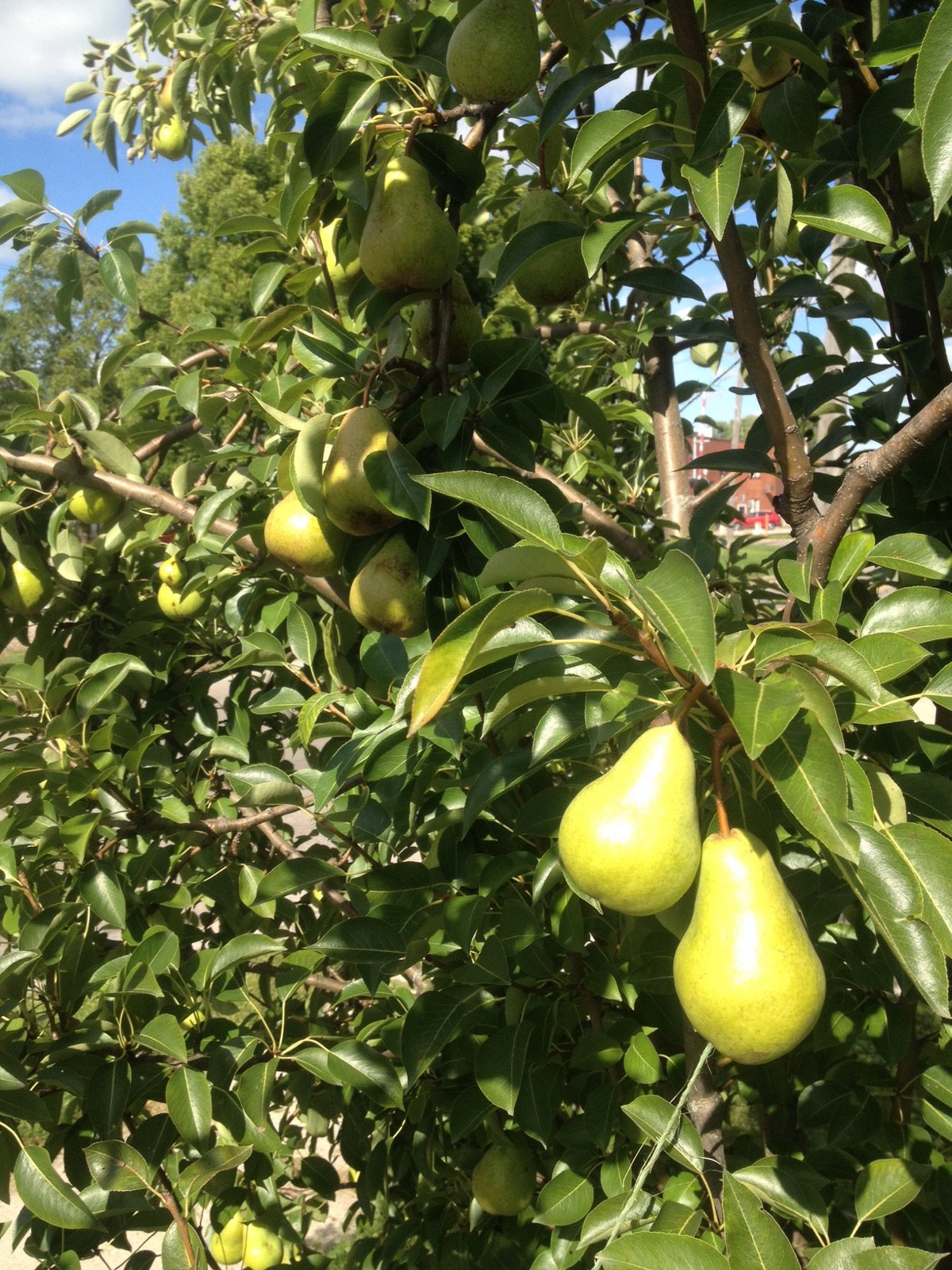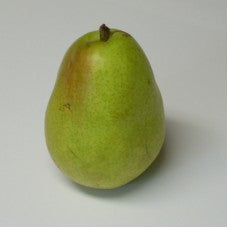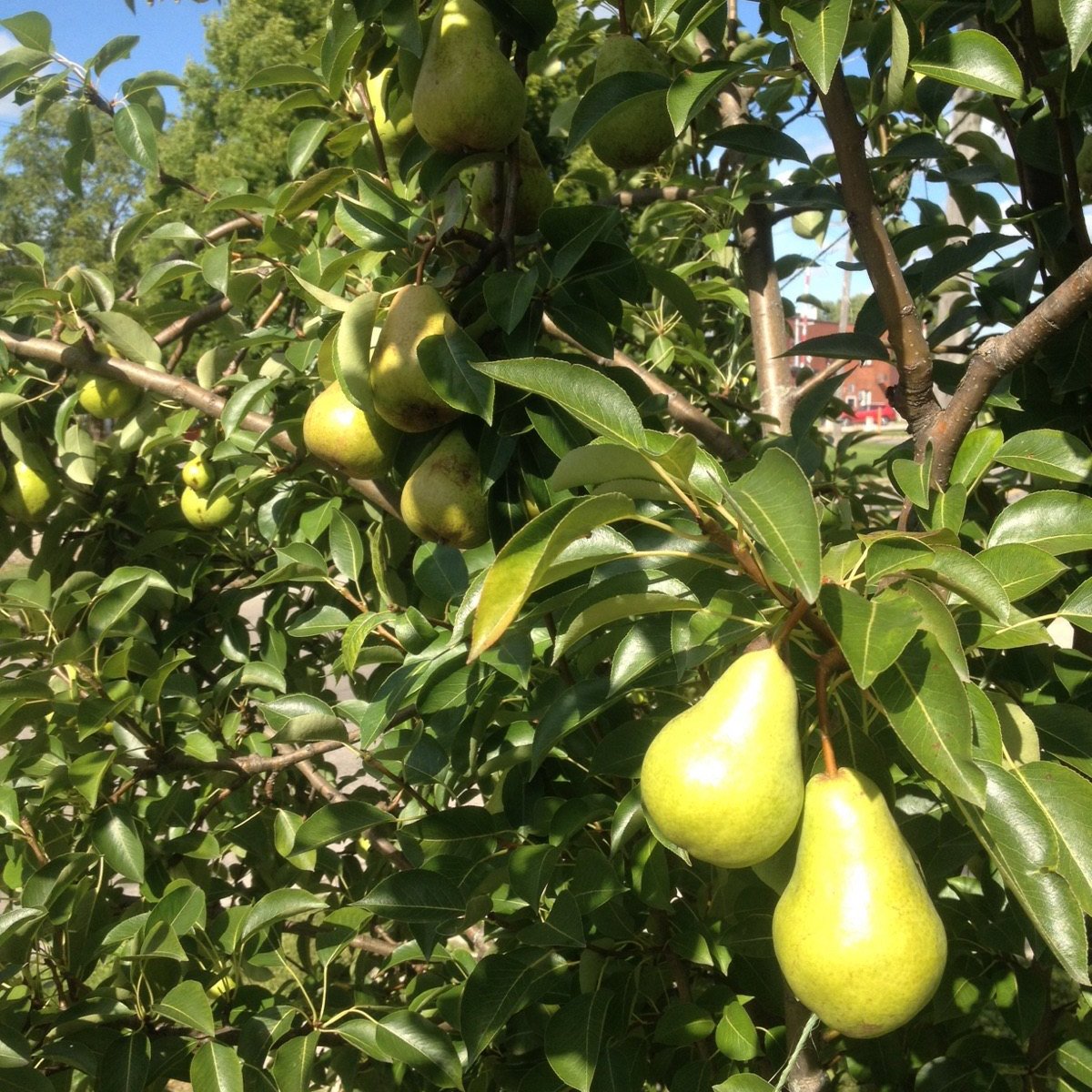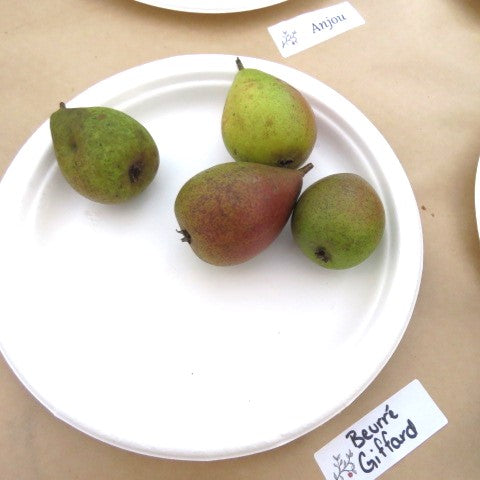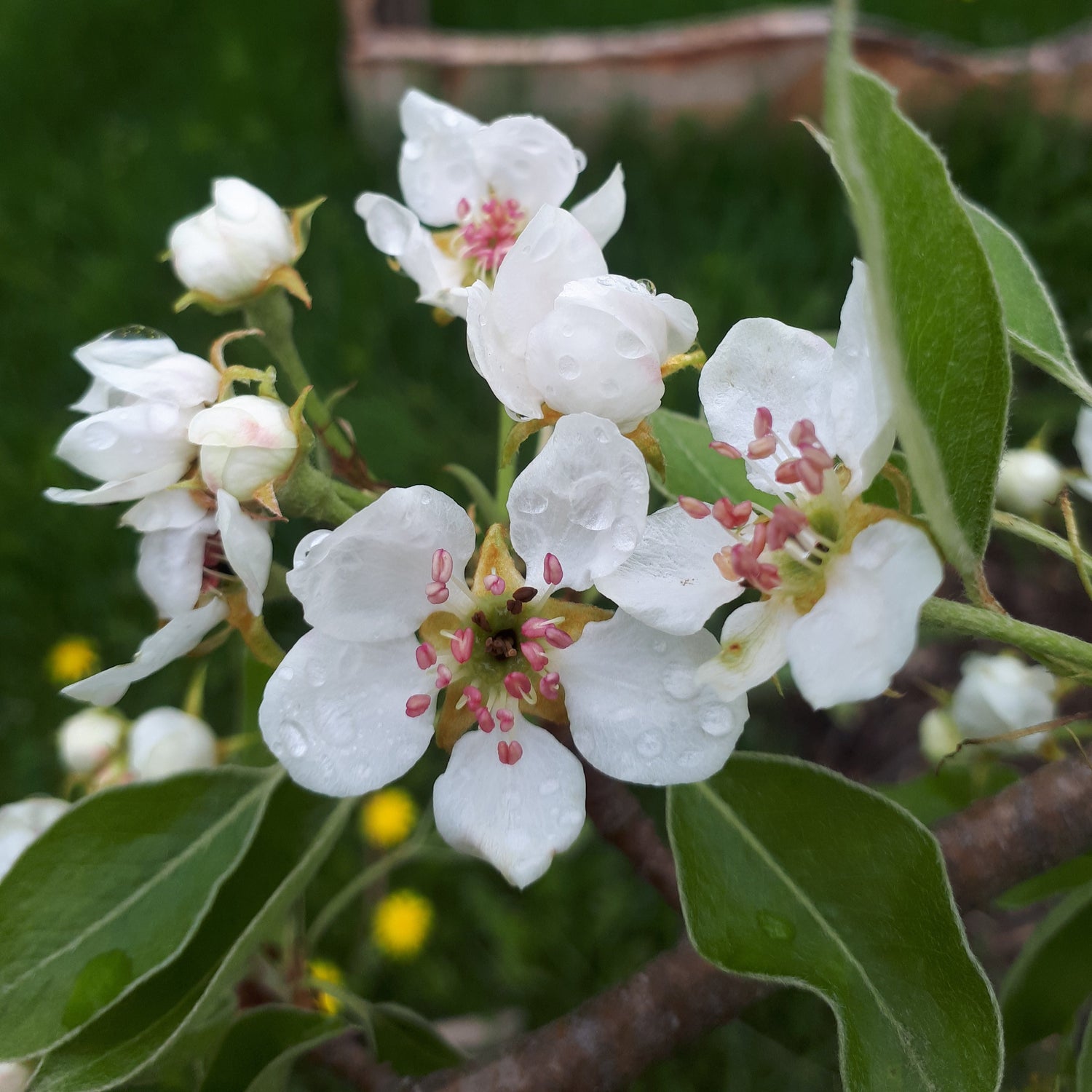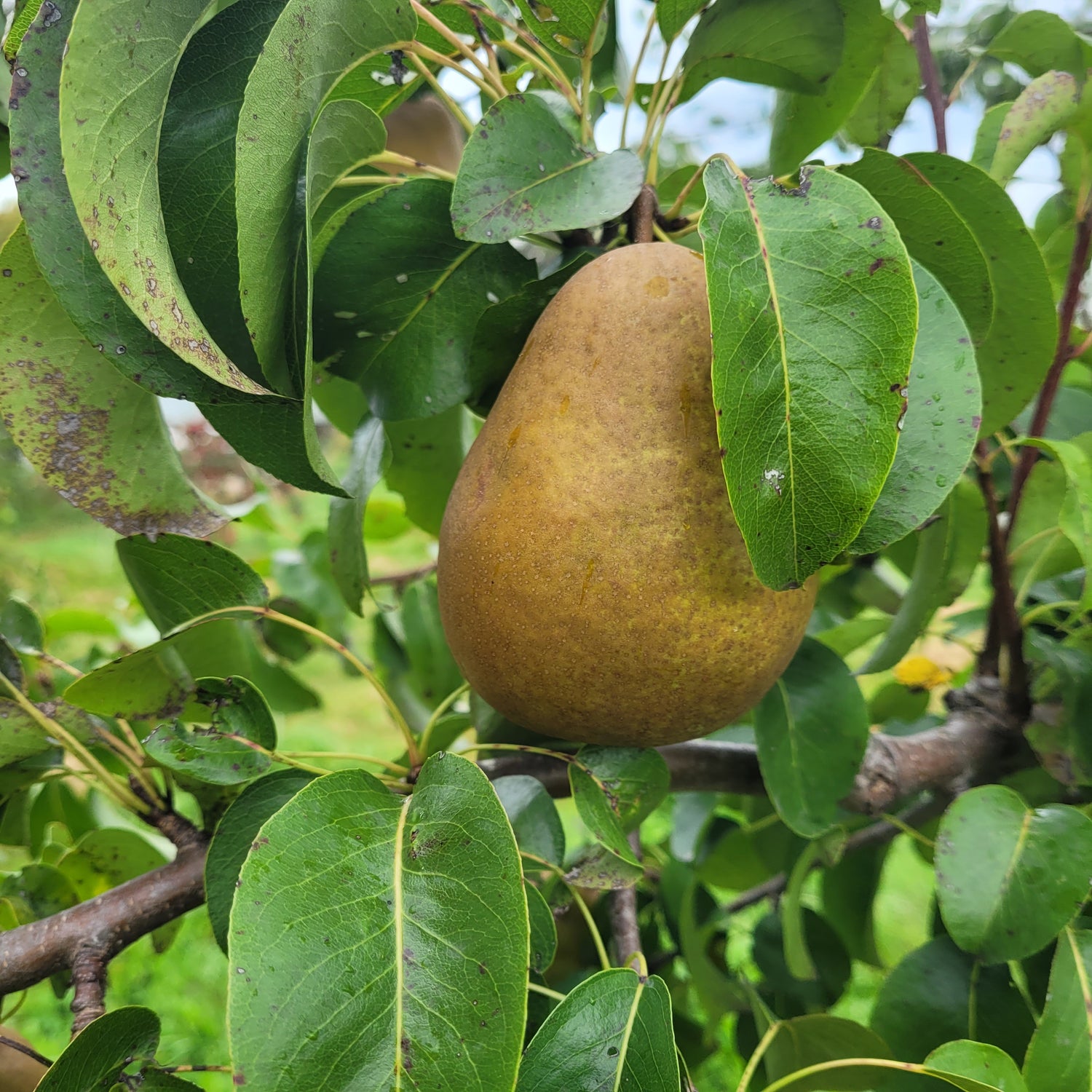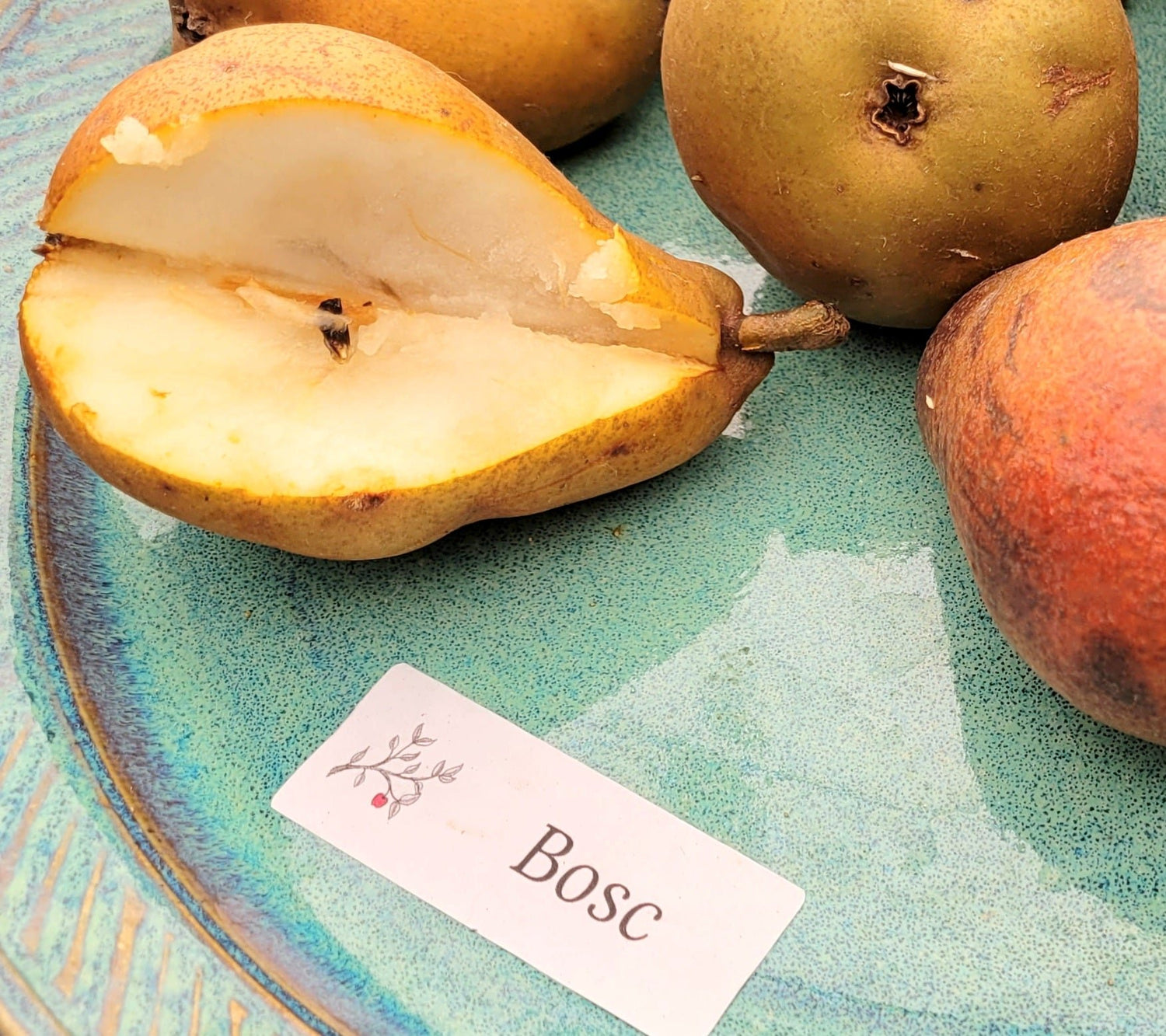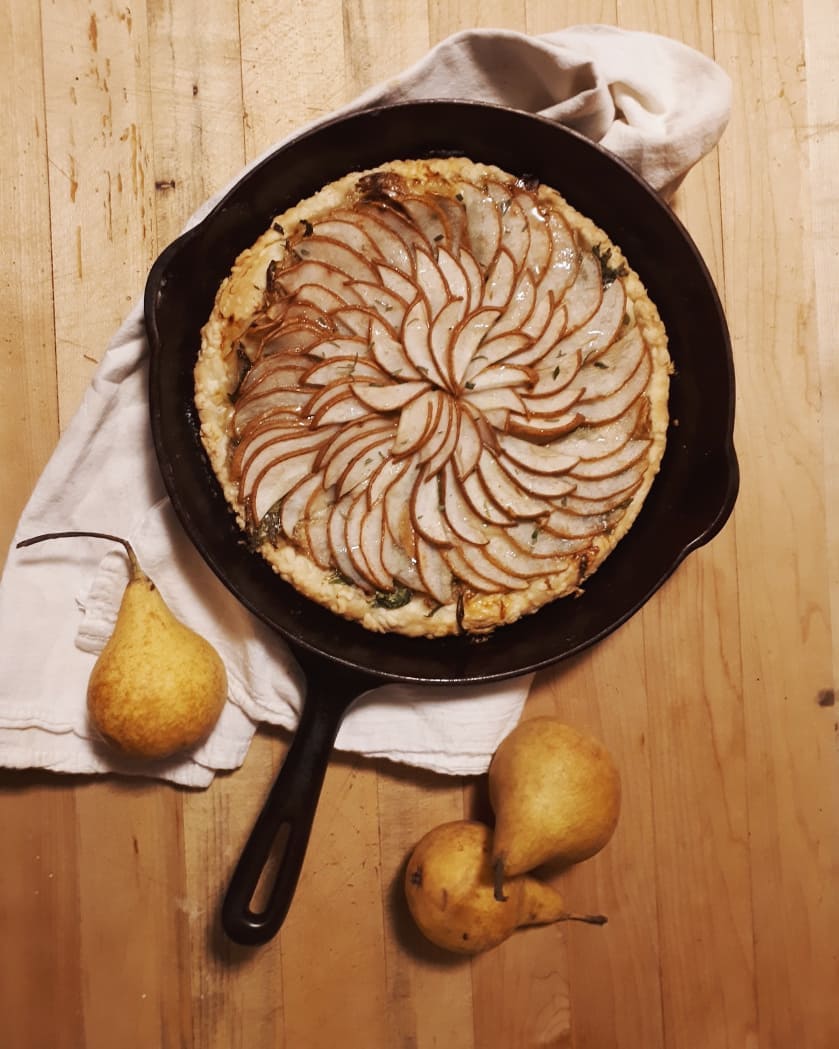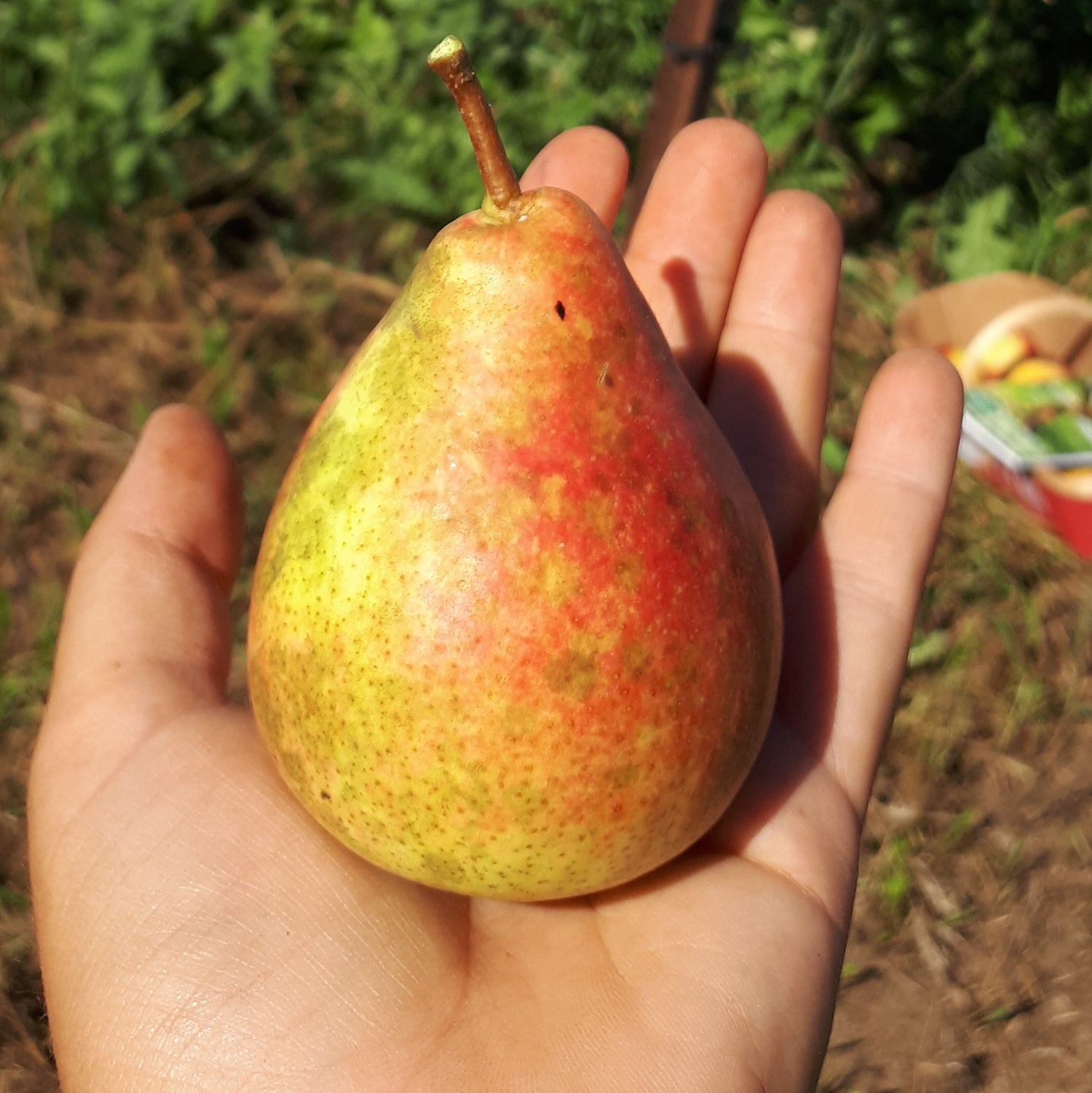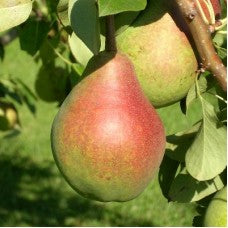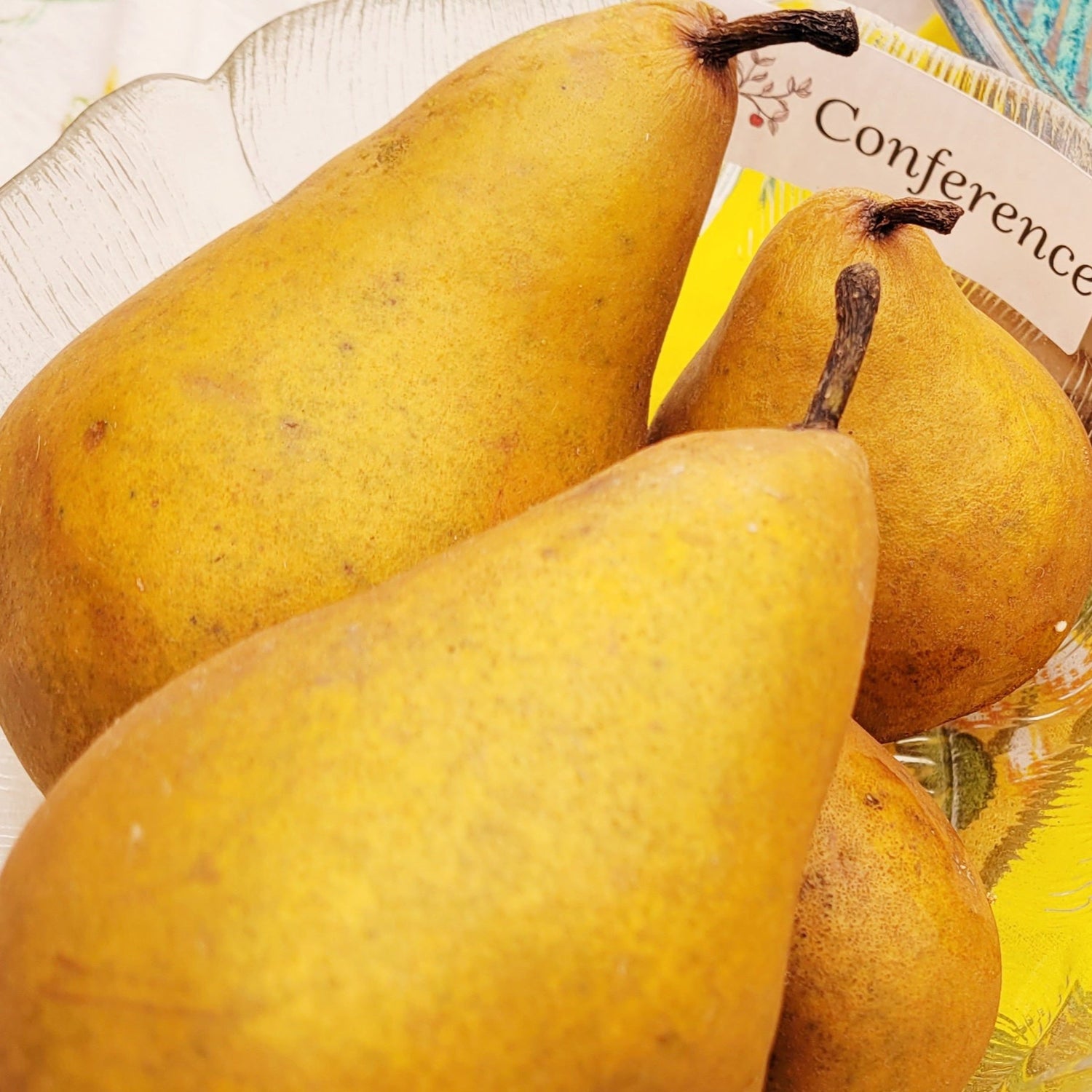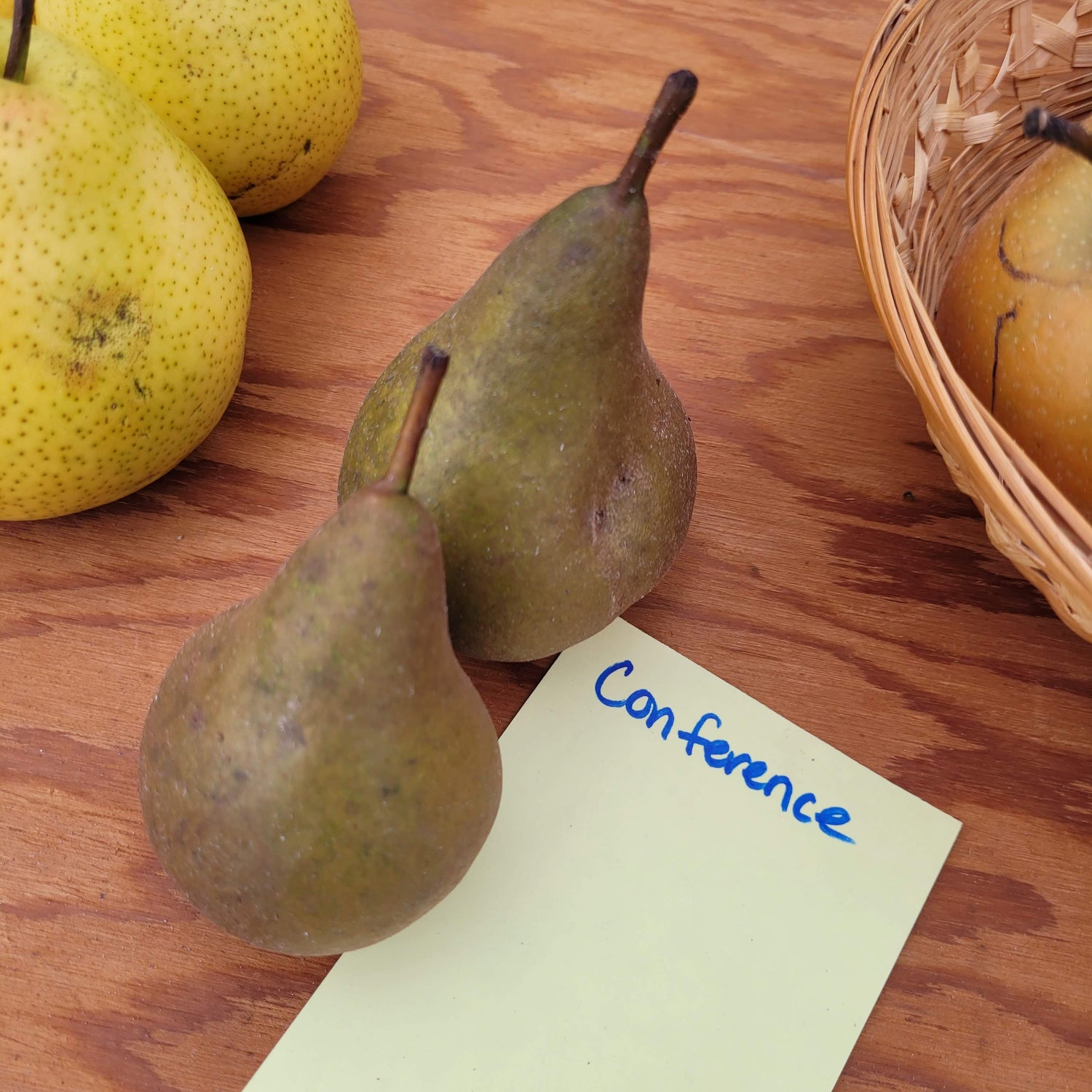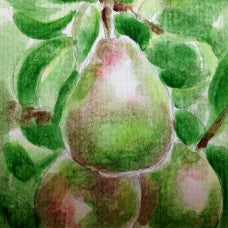European Pear Trees
Pyrus communis
A pear tree is an excellent addition to the backyard or orchard. Although slow to start bearing, pears are hardy and reliable producers requiring less attention than most other types of fruit trees. While some pears are partially self fertile, we recommend planting at least two different cultivars for reliable pollination; European and Asian pears do cross pollinate. Pears ripen from the inside out, and therefore typically should be picked when the fruit is still a bit hard. They then can fully ripen off the tree - especially important if it is a winter pear. A slight softening at the stem end will indicate the fruit ripe.
Sort by:
36 products
36 products
History: Anjou is an older variety of pear that likely originated in France or Belgium in the mid-1800s. They were originally called 'Nec Plus Meuris' but at some point adopted the name Anjou (or d'Anjou or Beurre d'Anjou) after the French region when introduced to England or the US. Anjou pears are still quite popular and are one of the most commonly grown pears in the United States.
Why We Grow It: Anjou is a popular pear due to its good eating quality and flavour. The skin is greenish yellow, and the flesh is firm and sports a hint of yellow. The fruit keeps well and the tree is vigorous and hardy.
History: Bartlett pear, better known as William's Bon Chretien (translated from French as William's Good Christian) or William's pear in Europe, has a long history with unknown origins. What we do know is that in 1483 King Louis XI summoned holy man Francis of Paola to his deathbed and Francis offered the king a pear seed from his birthplace of Calabria in Italy. The name 'Good Christian' was given to the pear as a result. In 1799, this variety was brought to Roxbury, Massachusetts where it was planted and eventually renamed 'Bartlett' by Enoch Bartlett who was unaware of its origins. The mistake was not realized until 1828, by which time "Bartlett" pears were already popular in North America and the mistake could not be undone.
Why We Grow It: Bartlett is the most commonly grown pear in North America and with good reason. Not only is it productive and easy to grow, but it produces large yellow fruit with a delectable flavour.
Note: We graft our Dwarf Bartletts with an Old Home interstem to maintain compatibility between Province Quince rootstock and Bartlett.
History: Beurré Giffard was discovered as a chance seedling by Nicolas Giffard in 1825 in France. "Beurré" translates from French as "butter-like," referring to the smooth, juicy flesh that was typical of pears developed at this time in France and Belgium. It was later introduced to the United States in 1850.
Why We Grow It: This French heirloom pear is one of the earliest ripening pears we offer. Its sweet, melting yet crisp flesh is similar to Bartlett with an excellent flavour.
History: Beurré Hardy was cultivated in France around 1820 by a Monsieur Bonnet and was named after Julien Alexandre Hardy, the director of the Luxembourg Gardens located in Paris. "Beurré" translates from French as "butter-like," referring to the smooth, juicy flesh that was typical of pears developed at this time in France and Belgium. It is considered a classic French fresh-eating pear and remains popular to this day.
Why We Grow It: Beurré Hardy produces a sweet, aromatic pear with white/pinkish flesh that has a hint of rosewater. It grows quickly but can take a while to start fruiting, although once it does it produces reliably heavy crops when grown in warm areas. Its blooms are tolerant of late spring frosts although it isn't always a very reliable pollination partner.
History: Bonne Louise de Jersey originated from Avranches in Normandy, France in the 1780s. It was originally known as Bonne Louise d'Avranches until it was taken to Jersey in the Channel Islands. As it grew in popularity in the UK, it was given the name Bonne Louise de Jersey instead.
Why We Grow It: Bonne Louise de Jersey is a rich, buttery pear that produces a juicy, red blushed fruit. In spring, this pear is also adorned with a profusion of notably attractive blossoms, adding a nice touch to any landscape. Although the tree is less vigorous than some other pears, this makes it suitable for potting and espalier.
History: Bosc pears have an unclear history, either originating from Belgium or France. Some say that an M. Bosc in Belgium grew it from seed around 1807 while others believe it was found as an old tree in France in the 1830s and named after horticulturalist Louis Bosc. Bosc's alternate names 'Beurre Bosc' refer to its buttery texture and 'Calebasse Bosc' refers to its gourd-like shape. Regardless of its origins, Bosc has remained popular and is grown in numerous countries around the world.
Why We Grow It: Bosc pears are long and slender with golden brown russetted skin. The flesh is of high quality, very sweet, and the pears store much better than most varieties. They can also be used to make a lovely tart, with a sprinkle of thyme for a savory delight!
History: Butirra Precoce Morettini was bred as a cross between Coscia and Bartlett in 1956 by A. Morettini as part of an Italian breeding program. It is mainly grown in Italy, Spain, and Portugal.
Why We Grow It: This is an excellent early ripening pear that is sweet and juicy, with crunchy medium-fine grained flesh which mellows in storage to a delectable buttery texture. It has mild floral notes, with just the right amount of sweetness. The tree produces reliable and heavy crops of yellow fruit with a vibrant red flush that store decently well.
History: Clapp's Favourite Pear originates from Massachusetts where Thaddeus Clapp discovered it as a chance seedling on his property in the 1850s. It was introduced commercially in the 1860s and continues to be grown in the UK and US today.
Why We Grow It: This old variety is hardy and regularly bears excellent medium-large fruit that are yellow with pink blush. They have good flavour but need to be enjoyed rather quickly since the fruit doesn't store long. The fruit needs to be picked about 10 days before completely ripe and allowed to ripen off the tree.
History: Conference pears were found growing in the nursery of Thomas Francis River in the UK in 1884. The following year, he introduced the variety at the National British Pear Conference in London where it won fist place, solidifying its reputation and earning its name. Conference pears continue to be grown in several European countries today where it remains very popular.
Why We Grow It: This old variety has remained popular due to its pleasant and sweet flavour. It can be eaten right off the tree and will keep for a couple months. The fruit itself has an elongated neck, giving it a rather odd appearance.
History: Doyenné du Comice was obtained from a garden in Angers in the 1840s as a sapling. In 1848 it bore its first pears which were quickly noted for their excellent flavour. Throughout the 1850s this variety reached other countries such as the UK and US, and in 1894 it was deemed "the best pear in the world" by the London Horticultural Journal. Whether or not it lives up to that much praise, it is still commonly grown, particularly in France.
Why We Grow It: It is certainly enticing to grow and eat what is considered one of the finest dessert pears. The fruit is medium in size with pale yellow skin and juicy, pale yellow flesh. It needs to ripen off the tree for about one month.
Showing 10/36

